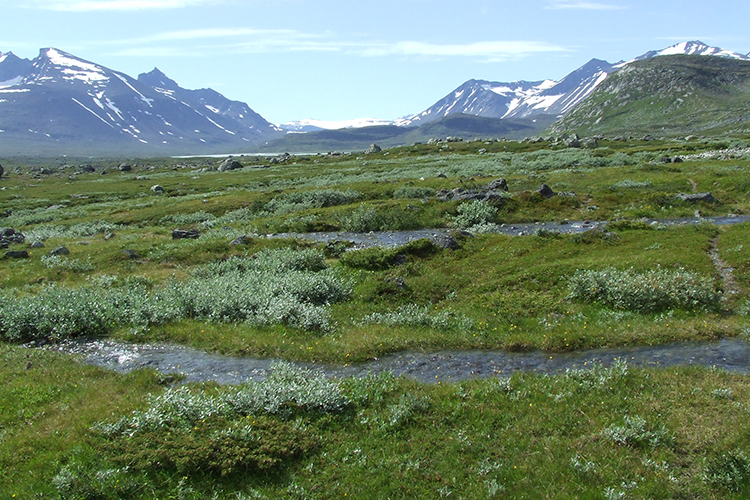Climate change has the Arctic seeing green

As temperatures in the Arctic rise in response to climate change, vegetation has invaded areas once too frigid to support plant life. Scientists at UC Berkeley and Berkeley Lab have devised a way to quantify this surge in plant growth, finding that 16 percent of the land where cold temperatures limited plant growth in 1982 now supports vegetation.
The researchers predict that by 2100, only 20 percent of the vegetated land in the northern hemisphere will be limited by cold temperatures, allowing plants to grow earlier in the season and in new and unexpected places.
“Although the greening might sound like good news as it means more carbon uptake and biomass production, it represents a major disruption to the delicate balance in cold ecosystems,” said first author Trevor Keenan, a faculty scientist in Berkeley Lab’s Earth and Environmental Sciences Area and an assistant professor in UC Berkeley’s Department of Environmental Science, Policy and Management.
In the study, the researchers analyzed 30 years of data collected by the Advanced Very High Resolution Radiometer on board a succession of satellites operated by the National Oceanic and Atmospheric Administration. Each pixel represents the radiation absorbed over an area of approximately 25 square miles, which the team used to estimate plant cover.
They compared their results with state-of-the-art climate models — part of the Coupled Model Intercomparison Project Phase 5, or CMIP5 — and saw surprising deviations.
“Our findings suggest that CMIP5’s predictions may have significantly underestimated changes in the Arctic ecosystem, and climate models will need to be improved to better understand and predict the future of the Arctic,” Keenan said.
